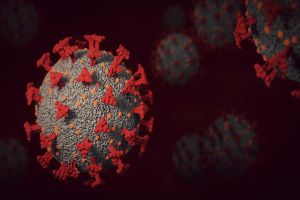
Omicron sublineages leading to high number of hospitalizations and deaths, says WHO
Geneva: Globally, the number of new COVID-19 cases and deaths continues to decline since the end of March 2022, the World Health Organization (WHO) stated here today.
During the week of 25 April through 1 May 2022, over 3.8 million cases and over 15 000 deaths were reported, decreases of 17% and 3% respectively, as compared to the previous week. However, an increase in the number of new weekly cases was reported from the African Region (+31%) and the Region of the Americas (+13%), and the number of new weekly deaths increased in the South-East Asia Region (+69%) largely due to a delay in the reporting of deaths from India.
As of May 1, 2022, over 500 million confirmed cases and over six million deaths have been reported globally.
At the country level, the highest number of new weekly cases were reported from Germany (558 958 new cases; – 24%), Italy (384 825 new cases; –8%), France (382 208 new cases; –30%), the Republic of Korea (380 455 new cases; – 35%), and the United States of America (372 167 new cases; +27%).
The highest number of new weekly deaths were reported from the United States of America (2 199 new deaths; – 5%), India (1 650 new deaths; +273%), the Russian Federation (1 129 new deaths; –19%), France (900 new deaths; +2%), and Italy (898 new deaths; –11%).
Since its designation as a VOC by WHO on 26 November 2021, Omicron has continued to evolve, leading to variants with slightly different genetic constellations of mutations. Each constellation may differ in the public health risk it poses, including the change in epidemiology and or the severity profile. The main features of Omicron sublineages are the high growth advantage over other variants, which is mainly driven by immune evasion.
Omicron sublineages have led and are still leading to a high number of cases and, as a result, to a high number of hospitalizations and deaths.
Driven by Omicron sub-variants, WHO reports an increase in reported cases in the Americas and Africa. The South African scientists who identified Omicron late last year have now reported two more Omicron sub-variants, BA.4 and BA.5, as the reason for a spike in cases in South Africa.
“It’s too soon to know whether these new sub-variants can cause more severe disease than other Omicron sub-variants, but early data suggest vaccination remains protective against severe disease and death,” WHO Director-General Dr Tedros Adhanom Ghebreyesus said.
Three Omicron sublineages BA.4, BA.5 and BA.2.12.1 have acquired a few additional mutations that may impact their characteristics (BA.4 and BA.5 have the del69/70, L452R and F486V mutations; BA.2.12.1 has the L452Q and S704L mutations). Based on GISAID data and reports from WHO regional offices and countries, the number of cases and the number of countries reporting the detection of these three variants are rising, WHO stated.
“The best way to protect people remains vaccination, alongside tried and tested public health and social measures,” Dr Ghebreyesus said.
– global bihari bureau





